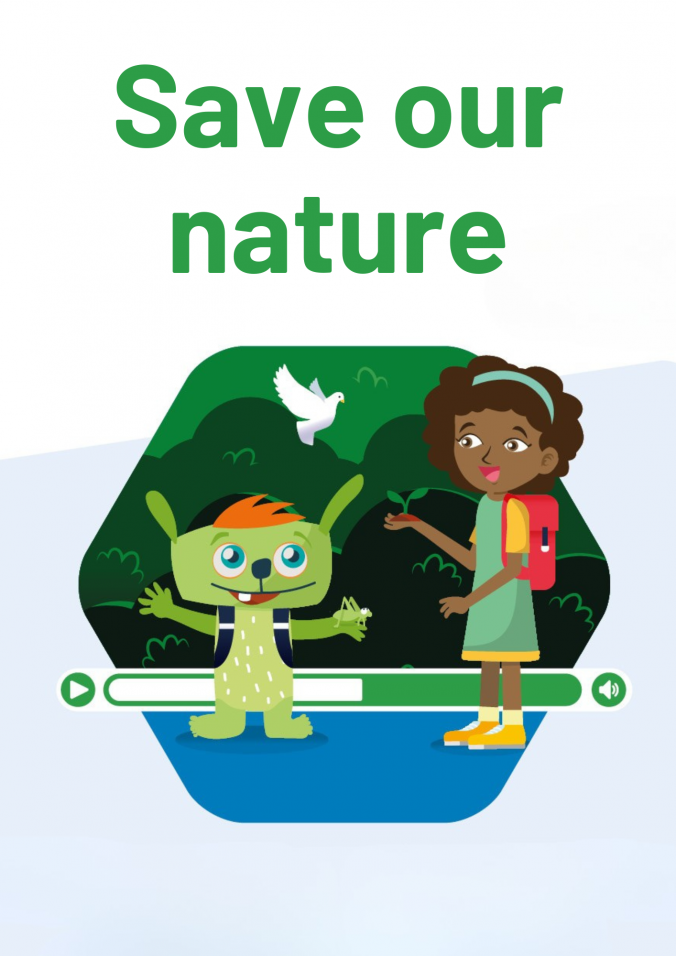What is the Secret to Eco-Friendly Homes?

Overview
Overview
Keywords: temperature, heat, insulation, energy, water, states of matter, changes of state
Subjects: science, mathematics
Age group: 7-10 years old
Difficulty level: ● ○ ○ (easy)
![]()
![]()
![]()
![]()
This experiment is part of the unit "Climate Action" written by: Esra Aksoy (TR), Rebecca Mudde (GB), Rute Oliveira (PT), Anastasia Papakonstantinou (GR)
Global warming and rising sea levels are happening because we emit huge amounts of greenhouse gases into the atmosphere. One of the causes for the greenhouse gas emissions is our energy consumption. A significant part of our energy consumption is for climatization: heating our homes, and sometimes cooling them in summer. Thus, saving heating energy has a big effect. One way to reduce the amount of greenhouse gas emissions and to cut costs is to build our homes more energy friendly. This activity seeks to answer the question “What’s the secret to eco-friendly homes?”.
Buildings must provide shelter, comfort and safety. However, they represent a large consumption of energy and natural resources. Learning about how to thermally insulate buildings and learning about the different types of insulating materials is very important to save energy, to maintain a comfortable temperature inside, and to save natural resources.
This project investigates the insulating capacity of different materials of easy access and low cost. It aims to discuss how we can improve energy efficiency and promote sustainable architecture.
This project is interdisciplinary, integrating concepts from
- mathematics (analysing data),
- communication skills (communicating about environmental issues),
- social studies (understanding the impact of architecture in energy consumption),
- geography (recognising the various regions of the planet and their characteristics),
- physics (physical properties of materials).
The experiment
Required materials
- 5 larger cups (they need to be the same size)
- 5 smaller cups (they should fit inside the larger cups and leave a bit of space)
- water
- a tablespoon
- wool, cotton fabric, paper/cardboard, hay/straw
- cling film
- 5 rubber bands
- a stopwatch
- a notebook and a pencil
Experiment guide
This experiment can be performed by the teacher for the class, but depending on the materials available, age and autonomy level of the students, they can perform the experiment in small groups.
- Start by cutting the different materials, such as cotton fabric, paper or cardboard, hay and wool, into smaller pieces so that they fit into the cups.
- Take the 5 larger cups of the same size and the 5 smaller cups that fit inside the larger cups.
- Put one tablespoon of water into each of the small cups. You can choose to fill in a different amount of water, but it must be the same in all cups for it to be a scientifically correct test.
- Place the small cups with water in the freezer and wait until the water freezes.
- Line the inside of the larger cups with the four different insulating materials. The fifth cup will only be filled with air.
- Once the water is frozen, place the small cups inside the large cups lined with the insulating material. Top the cup with the same insulating material.
- Cover all cups with cling film and secure with a rubber band or thread.
- Place all cups in the sun.
- Turn on the stopwatch and record how long it takes for the ice to melt completely. As the cups are topped with insulating material, you need to uncap them from time to time to see if the ice has melted.
The following materials were tested as insulators: cotton fabric, paper, straw, wool and air.
You can download a detailed exploratory guide for teachers as docx and pdf file.
Notes
You can also use ice cubes from a store or make them yourself using an ice cube tray. However, it is important that the students do a correct test and ensure that the amount of ice used is always the same.
Depending on the season and the temperatures, it may not be possible to carry out the activity by placing the cups directly in the sun. Thus, the experiment can be carried out using an infrared lamp or placing the cups near a heat source, such as a heater. Make sure to arrange the cups in a way that they all have the exact same distance from lamp (arrange them in a circle) of the heat source.
Natural phenomena that occur around us are complex and difficult to replicate in the laboratory, therefore we use models. Models are simplifications of reality that allow us to understand what happens in the real world in a more accessible way.
Questions for students
Suggestions for questions that you could ask the students when the video stops.
- Which material do you think will slow down the melting process?
- What do you think would happen if we used hot water instead of ice? Is the material that keeps the interior cooler for a longer time the same as the one that keeps the interior warmer for a longer time?
- Why is insulating our homes so important?
- Can you name some materials that are good at keeping our homes warm in winter and cool in summer?
- Imagine you are building a cosy shelter for the animals in the forest. Which materials would you use to insulate it from the cold?
This worksheet aims to demonstrate how well different materials work as insulators. The ultimate aim is to empower children to make informed choices about insulating materials that can significantly reduce energy consumption and contribute to a more sustainable future.
The experiment with the result
Buildings use about a third of the energy consumed worldwide. Of this, one third a large part is used to maintain the thermal comfort of buildings. 1
Good insulating materials help maintain our houses warm in winter and cool in summer: they stop the heat from escaping (in winter) or getting inside the house (in summer).
Energy tends to be transferred from warmer to colder places, so in winter the energy tends to be transferred from the inside of our homes to the outside where the temperature is lower. In the summer the energy tends to pass from the outside to the inside.
We can use nature as an inspiration and find an animal that adapts well to extreme temperatures. The camel is a good example of an animal that adapts well to high temperatures during the day and very low temperatures at night. If we look at the fine woolly coat of the camel, it is full of air. Air is an excellent insulator and materials that contain air in their structure are good insulators. Materials such as hay, wool, cotton, layers of paper or cardboard have air inside and are therefore good insulators. We can think of everyday situations that demonstrate this fact:
- We wear wool sweaters to keep us warm in winter.
- We use cardboard boxes to keep a pizza warm.
- Double-glazed windows, with air between them, are good at insulating houses.
- In the past, newspaper was used to keep take-away food warm.
- Mattresses in the past were made with straw.
- Many houses have double walls and an air layer between them.
- The bricks used to build houses have holes with air inside.
In addition to comparing different insulating materials, it’s important to consider their thickness, as this can impact their effectiveness. To explore this further, you could conduct an experiment where the thickness of each material is the variable, helping to understand how insulation effectiveness changes with different layers. To investigate the impact of material thickness on insulation, you can use a can filled with either hot or cold water, and time how long it takes for the water to reach room temperature. For instance, wrap the can in different layers of bubble wrap — such as one, two, or three layers — and record the time taken for the water temperature to change. By comparing the results, you can observe how the thickness of the insulating layer (bubble wrap) affects the rate of temperature change, providing insights into the effectiveness of different insulation thicknesses.
How does this video link to sustainability?
By improving the insulation of buildings, we are making them more energy efficient. Thus, by choosing better insulating materials we spend less energy to heat or cool the houses. Lower energy consumption is good for the environment because it reduces greenhouse gas emissions. The reuse of materials, such as cotton from unused clothing, also helps conserve our natural resources.
With simple STEM activities with low-cost features such as cotton, wool, or paper/cardboard scraps, we can build a model of a house with different insulations and test their effectiveness.
Differentiated learning
Explore ideas how you can use this material in your class and adapt it to a group of various levels and learning styles.
Encourage higher-ability students to explore additional research questions related to insulation, energy efficiency, or sustainable architecture. For example, encourage these students to make a scientific poster and present it to the class. Or let them research different types of architecture in countries with very different climates. Allow higher-ability students to design variations of the insulation experiment. They can explore the impact of factors like thickness, different materials, colour or external conditions on insulation.
Career orientation
Which career options are linked to this experiment and how can you introduce them to your students?
By exploring this experimental activity about insulating materials for houses, children can also be inspired to consider future careers in environmental protection. This could be a good opportunity to spark interest in professions that seek to understand and find solutions to climate change, such as: civil engineer, energy efficiency technician and architect.
Civil engineer
Civil engineers design effective insulation systems for buildings, ensuring energy efficiency and thermal comfort.
Civil engineering technician video
Civil engineering video
What is a civil engineer?
A civil engineer is a builder and problem solver. They design and oversee the construction of various structures, such as roads, bridges, buildings, and dams, to make our communities more efficient and better connected. Civil engineers use their knowledge of maths, science, and technology to create plans that meet the needs of society. They also consider factors like safety, cost, and environmental impact.
What does a day in the life of a civil engineer look like?
Civil engineers either work in an office, at a computer, with specific programmes that allow them to draw up plans of what they are going to build. They can also work outside on a site of a newly-built bridge, building or dam.
What responsibilities do they have?
Civil engineers are responsible for designing and managing construction projects. Civil engineers also supervise construction crews, inspect completed structures, and adjust as needed to ensure that everything meets safety standards and regulations.
Energy efficiency technician
Energy efficiency technicians evaluate and recommend solutions to improve the energy efficiency of buildings, including proper insulation.
Energy auditor video
Energy management technician video
What is an energy efficiency technician?
Energy efficiency technicians are like detectives investigating ways to save energy and protect the environment. They work to make homes, buildings, and appliances more energy efficient, which means they use less energy and reduce their impact on the planet.
What does a day in the life of an energy efficiency technician look like?
Energy efficiency technicians essentially work outside, with their own tools to test a home's energy efficiency. They look for places where the house may be losing more energy, look for solutions and suggest improvements.
What responsibilities do they have?
They have the responsibility to conduct energy audits to assess the energy performance of buildings and recommend solutions for improvement. Energy efficiency technicians play a vital role in helping communities reduce their carbon footprint and combat climate change by promoting sustainable energy practices.
Architect
An architect integrates sustainable building practices and insulation techniques into architectural designs.
What is an architect?
An architect is a designer and builder who creates plans for buildings and structures. They use their creativity and knowledge of engineering and construction to design spaces that are functional, beautiful and sustainable.
What does a day in the life of an architect look like?
Architects usually work in an atelier where they meet with their work team to make decisions. They can build small models of future projects. Their work is very creative and seeks to construct buildings and structures where human beings can live. An architect also works outside the atelier, they visit the construction sites to oversee the building process and make sure everything is going according to plan.
What responsibilities do they have?
They have the responsibility to create designs that are energy-efficient and environmentally friendly.
Further ideas
This activity can be developed with the support of other activities that are often part of the primary curriculum. Examples of these activities:
- Plan the same activity with the students, but instead of checking how long it takes the ice to melt, check how much the temperature of hot water decreases. This activity aims to investigate whether good insulating materials are good for hot weather and cold weather.
- Develop a project with your students to build a thermos or a thermal lunchbox. They can choose natural materials that have obtained the best results in the experiment carried out.
- Investigate the traditional architecture of different countries, with very different climates and check how the choice of materials is made. This research can be carried out in groups, in which each group is responsible for a region. The work can then be presented to the school community. With this investigation students can learn more about the different types of climates.
- A school trip to a building under construction can be thought of so that students can see what the materials used in the construction of roofs, walls and floors look like.
- Students can investigate the importance of the colour with which houses are painted. In warmer countries, such as southern Portugal, Spain and Italy, houses are painted white.
Yitong Dong, Jiashu Kong, Seyedmostafa Mousavi, Behzad Rismanchi and Pow-Seng Yap, Wall Insulation Materials in Different Climate Zones: A Review on Challenges and Opportunities of Available Alternatives. Thermo Special Issue: Advances in PCMs as Thermal Energy Storage in Energy Systems (2023).
TED talk:
Michael Pawlyn: Using nature's genius in architecture
(last accessed 30.10.2024)Video:
This Architect Transforms Used Textiles Into Bricks
(last accessed 30.10.2024)Career orientation videos:
Civil engineering technician
Civil engineering
Energy auditor
Energy management technician
Architect
(last accessed 30.10.2024)The award-winning Science on Stage festival project „We become experts in insulation!“ shows that thermal insulation is an exciting topic for primary school (PDF file page 9).
This experiment is part of the unit "Climate Action" written by: Esra Aksoy (TR), Rebecca Mudde (GB), Rute Oliveira (PT), Anastasia Papakonstantinou (GR)
Share this page

